AI vs. Traditional Frost Protection
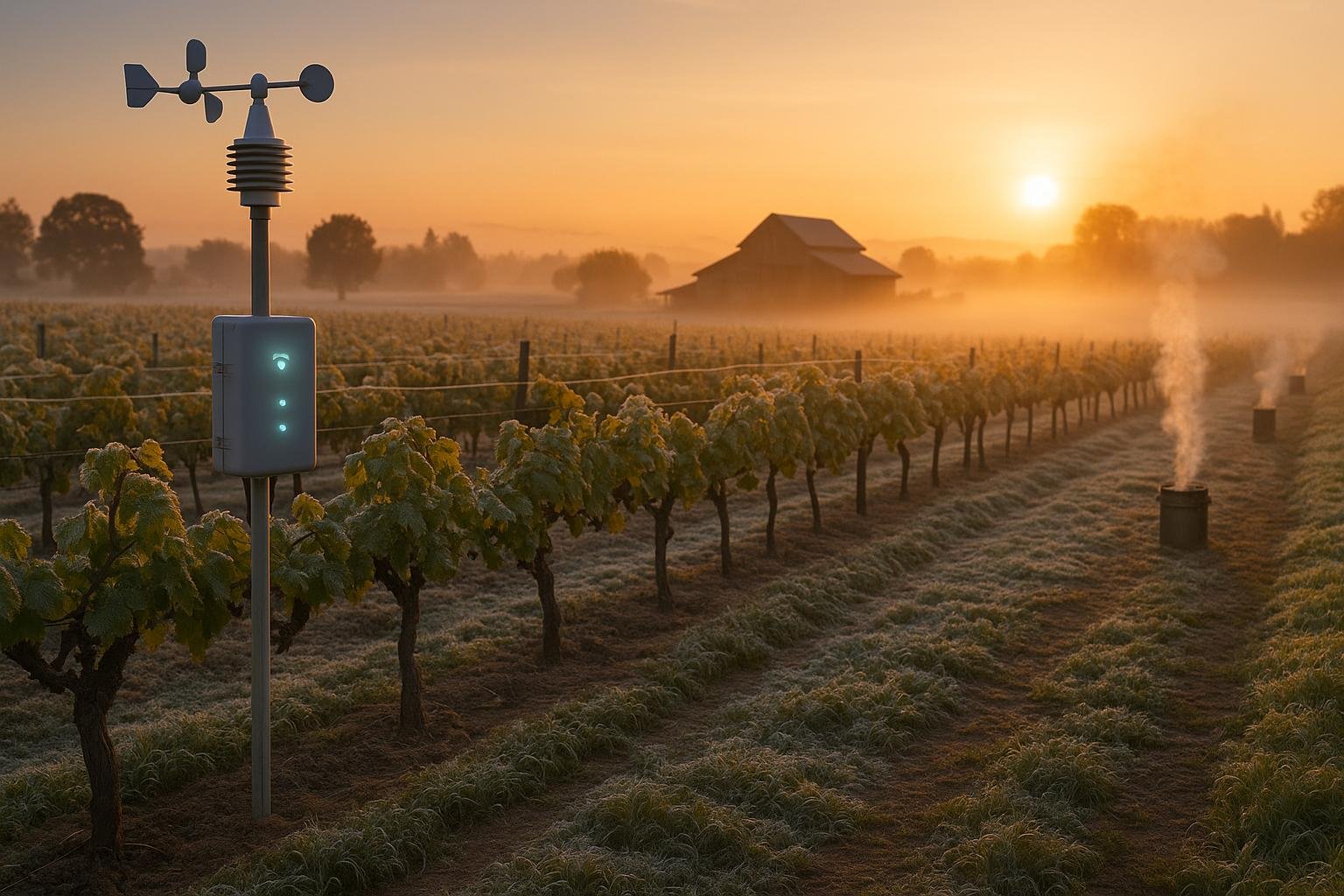
Frost can destroy crops, costing billions annually. Farmers use two main methods to protect against frost: AI-driven systems and manual techniques. Here’s what you need to know:
Key Takeaways:
- AI Systems: Use real-time data, predictive analytics, and smart devices for precise frost prevention. They save water (up to 25%), cut labor needs, and boost crop yields by 20–30%.
- Manual Methods: Include heaters, wind machines, and sprinklers. While effective, they are labor-intensive, use more resources, and depend on accurate weather forecasts.
Quick Comparison:
| Feature | AI Systems | Manual Methods |
|---|---|---|
| Accuracy | High (real-time adjustments) | Moderate (forecast-dependent) |
| Resource Efficiency | 85–95% | 60–70% |
| Labor Requirements | Low (automated) | High (manual effort) |
| Cost | Higher upfront, lower long-term | Lower upfront, higher long-term |
AI-powered solutions, like AIGardenPlanner, also offer tools for gardeners and farmers, such as frost alerts, optimized irrigation, and planting schedules. While manual methods are cheaper initially, AI systems provide better long-term savings and performance. For modern frost protection, AI is the smarter choice.
How AI could help farmers protect their crops

AI Frost Protection Systems
AI-powered frost protection is changing the game for agriculture, offering precise tools to predict and prevent frost damage. By analyzing real-time data and running advanced algorithms, these systems provide farmers with reliable solutions to safeguard their crops.
Weather Prediction and Monitoring
Today's AI systems are exceptionally skilled at processing multiple data streams to forecast frost events with impressive accuracy. For instance, a study near Alcalde, NM, used machine learning algorithms to predict frost with an error margin of just 1.53–1.72°C over a six-hour period. In comparison, the National Weather Service's forecasts had error margins ranging from 2.48–3.12°C. The success of these systems lies in their ability to:
- Analyze data from diverse sources like soil sensors, satellite imagery, and local weather stations
- Focus on microclimate conditions specific to individual fields
- Detect frost damage before it's visible to the human eye
- Provide early alerts to farmers about potential frost
This level of accuracy forms the backbone of automated frost defense systems, ensuring timely and effective responses.
"Unleashing AI's potential will transform decision-making for everyone from policymakers and emergency planners to industries that rely on accurate weather forecasts." – Dr. Scott Hosking
Smart Device Integration
AI frost protection systems also work seamlessly with smart devices, creating a robust defense network against frost damage. A standout example is a project by Technostacks that developed a BLE-enabled heating cable management system. This system featured:
- Mobile app functionality for both iOS and Android
- Real-time monitoring of T75 and T300 heating cables
- Automated problem detection with resolution guidance
- Tiered access control for different user roles
The integration of smart devices enhances the effectiveness of frost protection measures, as seen in the following components:
| Component | Function | Benefit |
|---|---|---|
| Smart Sensors | Monitor soil moisture and temperature | Enables precise interventions |
| Automated Controllers | Manage irrigation and heating systems | Minimizes manual effort |
| Mobile Integration | Provides remote monitoring and control | Allows 24/7 system oversight |
| IoT Devices | Collect and share real-time data | Supports rapid decision-making |
"Smart irrigation systems track, automate, and analyze water consumption, which helps you detect leaks, reduce waste, and give you timely alerts of potential problems." – DripWorks
For large-scale farming operations, combining accurate AI forecasting with smart device integration significantly reduces the need for manual monitoring. This approach is vital, especially considering the devastating impact of frost events, such as the €3.3 billion loss in Europe during 2017, where only 18% of crops were insured.
Manual Frost Protection Methods
Across farms and orchards in the U.S., traditional frost protection methods remain a go-to strategy. These approaches, grounded in years of practice, rely on physical tools and hands-on monitoring to shield crops during critical frost periods. Let’s dive into the primary tools used in these manual methods.
Equipment Types: Fans, Water Systems, and Heat Sources
Manual frost protection techniques can be grouped into three main categories:
- Frost Candles and Heaters: These provide additional heat to protect crops but come with high operational costs. While effective, they are not the most economical option for large-scale use.
- Wind Machines: These devices work by mixing warmer air from higher altitudes with the cooler air near the ground. They use significantly less fuel - only about 5–10% of what traditional oil heaters consume. In some cases, helicopters are used for this purpose, capable of raising temperatures by 5–8°F in just a minute of operation.
- Sprinkler Systems: These systems utilize the latent heat released when water freezes. By continuously applying water to crops, the freezing process helps maintain plant temperatures close to 32°F.
"When water freezes, it releases heat to its environment... Latent heat is how water can save your plantation or vineyard from frost".
Limits of Manual Methods
Despite their longstanding use, manual frost protection methods have limitations, especially during extreme frost events that can lead to significant financial losses.
Resource Challenges: These methods face obstacles in three critical areas:
- Water Usage: Sprinkler systems need precise water application rates tailored to the crop and temperature. For instance, protecting taller crops in temperatures as low as 21.2°F (-6°C) may require up to 5.8 mm of water per hour with a 60-second rotation.
- Labor Demands: Manual methods require constant attention, particularly during early morning frost events. This level of monitoring and adjustment can be labor-intensive.
- Operational Dependence: The success of these methods hinges on accurate weather forecasts and quick action. Even slight delays in activating the equipment can result in severe crop damage.
One striking example of the limitations of manual frost protection is the spring 2017 frost event in Europe, which caused crop losses amounting to €3.3 billion. Such challenges underline the need to explore more advanced and efficient frost protection solutions.
sbb-itb-4d6a8dd
🚀 Ready to Reinvent Your Garden?
Join thousands of homeowners who have transformed their gardens using our AI design tool. Upload one photo to explore endless possibilities.
Get your AI garden designs →AI vs. Manual Protection: Key Differences
AI-driven systems and manual methods differ in how they perform, their costs, and how they utilize resources. These differences play a big role in deciding the best approach for frost protection.
Performance Results
Frost-related crop losses are a major issue, making up over 20% of global agricultural losses annually. In the U.S. alone, around 15% of fruit and vegetable crops face frost damage each year.
Here’s how performance compares:
| Protection Method | Key Performance Indicators | Results |
|---|---|---|
| AI-Driven Systems | Alert Speed | Delivers pre-frost warnings in real time |
| Activation Speed | Automatically activates immediately | |
| Damage Prevention | Drastically reduces frost damage | |
| Manual Systems | Prediction Reliability | Depends on external weather forecasts |
| Activation Speed | Slower due to manual intervention | |
| Damage Prevention | Results vary based on human response |
"The integration of artificial intelligence (AI) automation into industrial frost protection systems has significantly transformed the market landscape. AI-driven technologies enable precision monitoring and real-time adjustments, optimizing energy consumption and system performance. Automation reduces human intervention, increasing operational efficiency and reducing errors. AI also allows for predictive maintenance, identifying potential failures before they occur, leading to minimized downtime and reduced repair costs."
This leap in performance also brings notable cost savings.
Cost Breakdown
The cost difference between manual and AI-driven systems is significant:
-
Traditional Equipment Costs:
- Wind machines: Between $10,000 and $40,000 per unit
- Sprinkler systems: Setup costs range from $5,000 to $15,000
- Maintenance: Over $5,000 annually per wind machine
-
AI-Driven Systems:
- Lower Operational Costs: Can save up to 40% compared to traditional fuel-based systems
- Reduced Maintenance Needs: Predictive maintenance minimizes unexpected repair expenses
- Longer Equipment Lifespan: Real-time monitoring prevents overuse and wear
These cost benefits make AI systems a more resource-efficient option.
Resource Usage
AI systems are designed to optimize resources, unlike manual methods that often rely on fixed rates for water and fuel. Here’s how they differ:
-
Water Management
AI systems adjust water usage in real time based on environmental conditions, unlike traditional sprinklers that operate at fixed rates. -
Energy Efficiency
Combining AI with renewable energy sources like solar or wind can cut fuel costs by up to 40%. -
Labor Requirements
Automation reduces the need for constant human monitoring, lowering labor costs and minimizing errors.
The industry is clearly moving toward smarter solutions. For example, the use of automated sprinkler systems has grown by 30% in the past five years, showing the increasing preference for AI-driven, resource-efficient frost protection systems.
AIGardenPlanner: Smart Frost Protection

Frost damage is a leading cause of crop losses across the U.S., impacting both large-scale farms and home gardens. Enter AIGardenPlanner, a tool that uses artificial intelligence to help gardeners - whether professionals or hobbyists - protect their plants from frost. By leveraging advanced AI methods, this platform addresses the common shortcomings of traditional frost protection techniques.
Climate-Based Plant Selection
One standout feature of AIGardenPlanner is its AI Plant Advisor, which evaluates local climate data and frost patterns to recommend plants that thrive in specific conditions. This makes it easier to create gardens that are not only beautiful but also resilient to frost.
| Feature | Benefit | Impact |
|---|---|---|
| Location Analysis | Examines frost trends in your area | Improves frost risk assessments |
| Weather Integration | Uses real-time weather updates | Cuts water usage by 25% |
| Smart Scheduling | Builds AI-driven planting calendars | Boosts crop yields by 20–30% |
By analyzing historical weather trends and integrating real-time updates, AIGardenPlanner creates precise growing schedules. This is especially helpful in areas where traditional weather forecasts often fall short, such as regions with unpredictable microclimates.
But this platform doesn’t stop at plant selection - it also provides tools that cater to gardeners of all experience levels.
Tools for All Skill Levels
AIGardenPlanner is designed to simplify gardening for everyone, offering features tailored to both beginners and seasoned professionals:
For Home Gardeners:
- Choose from 50+ garden styles to match your taste
- Get personalized schedules for garden upkeep
- Receive smart plant recommendations based on your environment
For Professional Landscapers:
- Access high-resolution design files for large-scale projects
- Take advantage of commercial licensing options
- Use advanced tools for managing complex landscaping projects
The platform transforms complicated data - like soil quality, water levels, and weather conditions - into easy-to-understand insights. This helps users make smarter decisions about garden planning and maintenance.
Traditional frost protection methods often fail due to poor timing or inefficiency. AIGardenPlanner tackles these issues with features like:
- Timely Alerts: Real-time notifications for frost risks, ensuring quick action
- Optimized Resources: Smart irrigation suggestions that reduce water use by up to 25%
- Continuous Updates: Ongoing improvements based on user data and feedback
Conclusion: Making the Right Choice
AI-powered frost protection systems clearly outshine traditional methods when it comes to performance, resource efficiency, and cost-effectiveness. These advanced systems can achieve up to 95% water efficiency, cut water usage by as much as 50%, and even boost crop yields by 30%.
The market trends back up these advantages. By 2025, the global agricultural frost protection market is expected to hit a valuation of $2.5 billion, showcasing the growing economic importance of these solutions.
Traditional methods often require constant manual intervention, which can be time-consuming and labor-intensive. On the other hand, AI-driven solutions - like those offered by AIGardenPlanner - take automation to the next level with real-time adjustments and precise climate analysis. Here's a side-by-side comparison of the two approaches:
| Feature | Traditional Methods | AI-Driven Protection |
|---|---|---|
| Weather Response | Manual monitoring | Real-time adjustments |
| Resource Efficiency | 60–70% efficient | 85–95% efficient |
| Labor Requirements | High maintenance | Automated management |
| Long-term Costs | Higher operational costs | Reduced ongoing expenses |
This table highlights the operational edge of AI-driven systems, where automation and precision take center stage. While the upfront cost of AI technology might be higher, the long-term savings and benefits are undeniable. These systems can analyze data from soil sensors, weather stations, and historical climate patterns to deliver unmatched accuracy in frost prevention. Add to that the reduced need for manual labor and the ability to make instant adjustments, and you have a solution that’s both efficient and sustainable.
For gardeners and landscapers, AI-driven tools like AIGardenPlanner offer a smarter, more reliable way to tackle frost protection. By leveraging automation and data-driven insights, these systems ensure better performance, conserve resources, and reduce the hassle of manual monitoring. The advantages are clear - AI is the future of frost protection.
FAQs
Why are AI-driven frost protection systems more accurate than traditional methods?
AI-powered frost protection systems stand out for their precision, thanks to their ability to utilize advanced algorithms and machine learning. By analyzing historical weather data, real-time conditions, and predictive models, these systems deliver highly localized frost forecasts. In fact, they can often narrow prediction errors down to just 1.5–1.7°F for short-term forecasts.
What makes them even more effective is their integration with IoT sensors, such as temperature and humidity monitors. These sensors continuously feed data, enabling the system to adapt instantly to changing conditions. The result? Timely actions that shield crops from frost damage while cutting costs by avoiding unnecessary measures. With AI, frost management becomes not only smarter but also far more practical.
What are the long-term savings of using AI-powered frost protection systems, despite their higher upfront costs?
AI-powered frost protection systems might come with a higher upfront cost, but they can lead to significant savings over time by streamlining operations and cutting expenses. Leveraging real-time data and predictive analytics, these systems fine-tune frost prevention efforts, reducing energy consumption and material waste. This translates to fewer interventions, which saves both time and money.
What’s more, the accuracy of AI in forecasting frost conditions helps shield crops from damage, lowering the chances of expensive losses. Over time, this level of precision not only protects your harvest but also ensures a strong return on investment. Opting for AI in frost protection offers a blend of efficiency, reliability, and long-term savings.
How does AI improve resource efficiency in frost protection compared to traditional methods?
AI-powered frost protection systems bring a smarter way to manage resources by leveraging real-time data and advanced analytics to accurately predict frost conditions. Instead of depending on general weather forecasts, these systems focus on local microclimates and specific weather patterns. This means frost protection measures are activated only when absolutely necessary, cutting down on the excessive use of water, energy, or heating.
This precise timing not only reduces waste but also slashes operational costs while offering better crop protection. By combining efficiency with effectiveness, these systems help safeguard crops and enhance their ability to withstand challenging conditions - making them a game-changer for modern agriculture.
🎨 Visualize Your Dream Garden Today!
Transform any outdoor space into a professional landscape design in minutes. Just upload a photo, choose your style, and let our AI do the rest.
Start your garden transformation now →Related posts
Related Articles
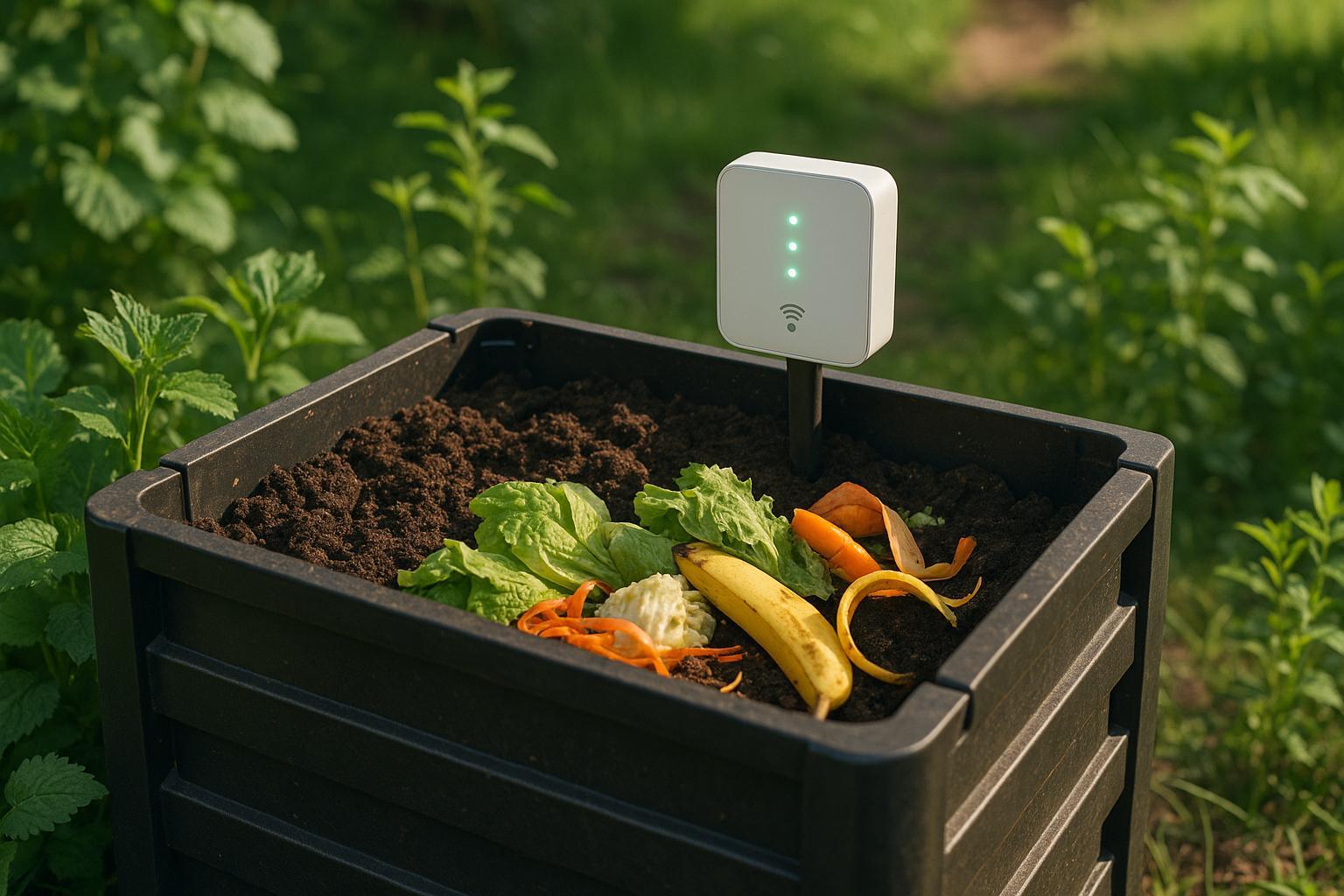
Predictive Analytics for Compost Efficiency
Explore how predictive analytics enhances composting efficiency and quality through real-time data monitoring and machine learning techniques.

Can You Put Ivy in the Garden Waste Bin? Understanding the Eco-Friendly Disposal Options
Learn about the regulations, benefits of composting, and alternative disposal methods for ivy in garden waste bins. Discover sustainable ways to manage garden waste.
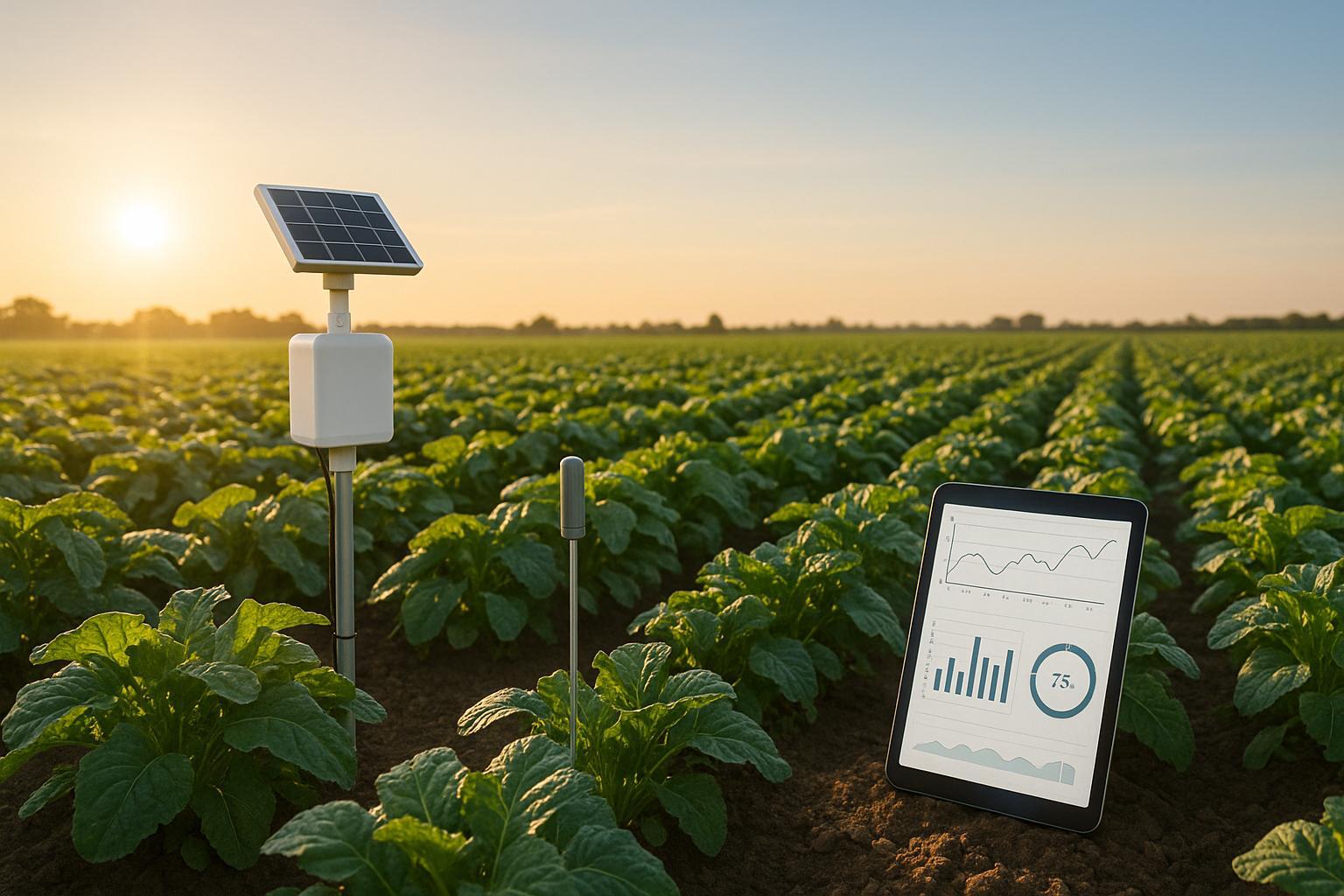
AI vs IoT: Which Drives Better Plant Growth Predictions?
Explore how AI and IoT are revolutionizing agriculture by enhancing plant growth predictions through real-time data and advanced analytics.

How AI Tracks Biological Control Agents in Real Time
Explore how AI enhances pest management by tracking natural predators in real time, reducing pesticide use, and fostering healthier ecosystems.
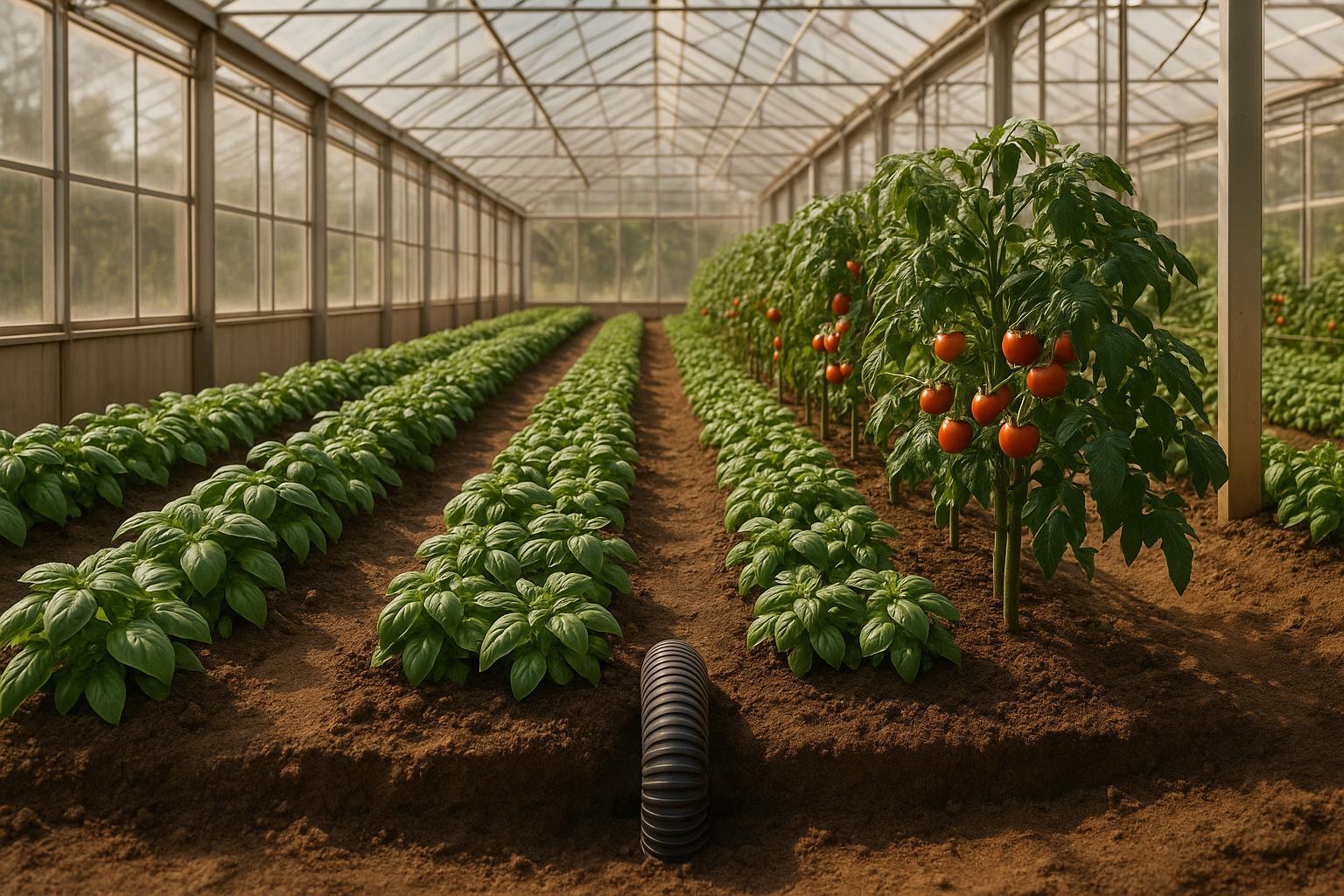
Companion Planting with Geothermal Climate Control
Explore how geothermal climate control enhances companion planting by creating optimal growing conditions, boosting yields, and reducing energy costs.
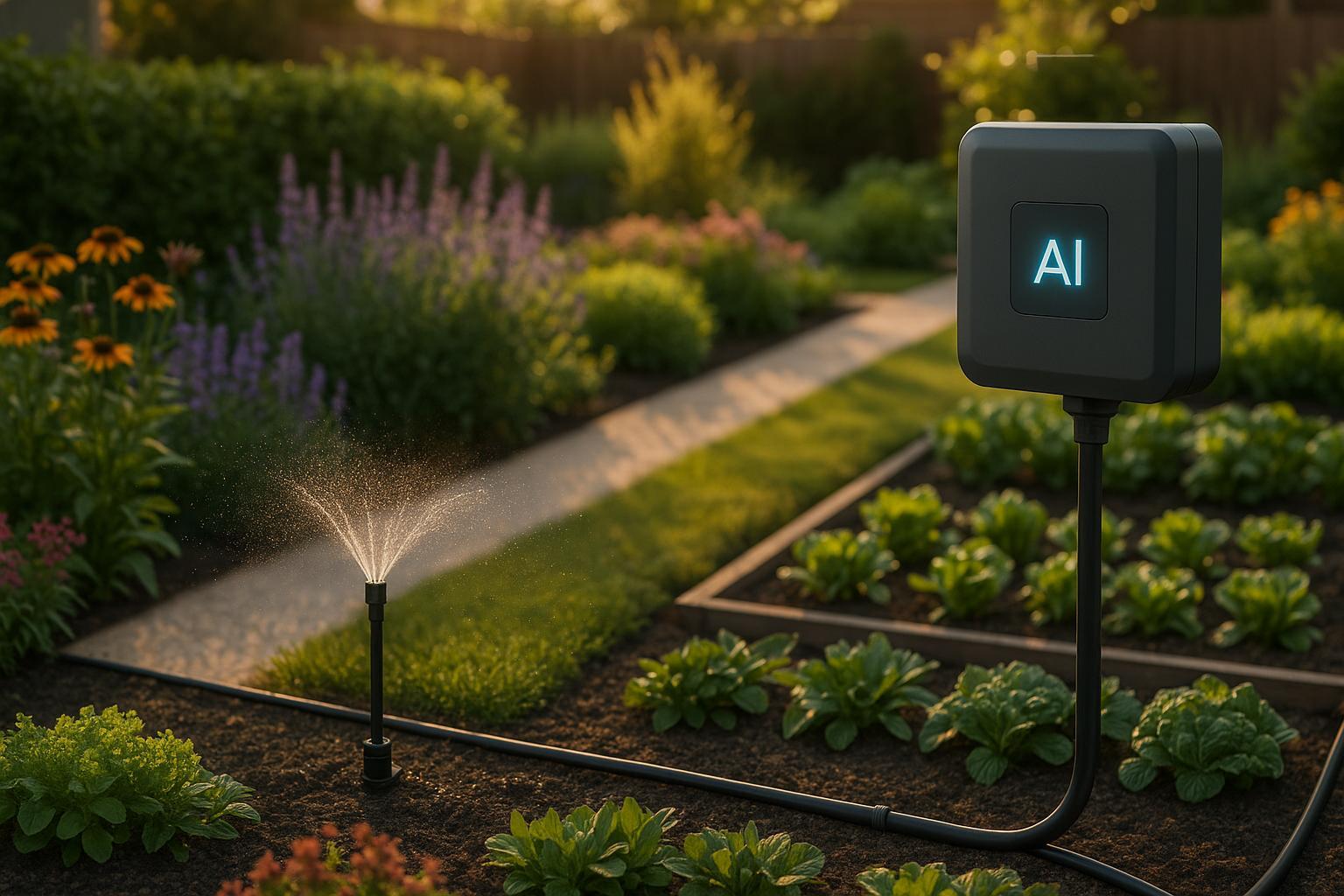
How AI Improves Garden Water Allocation
Explore how AI-driven irrigation systems optimize water usage, enhance plant health, and reduce costs in garden management.